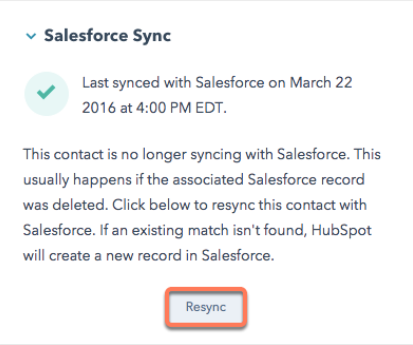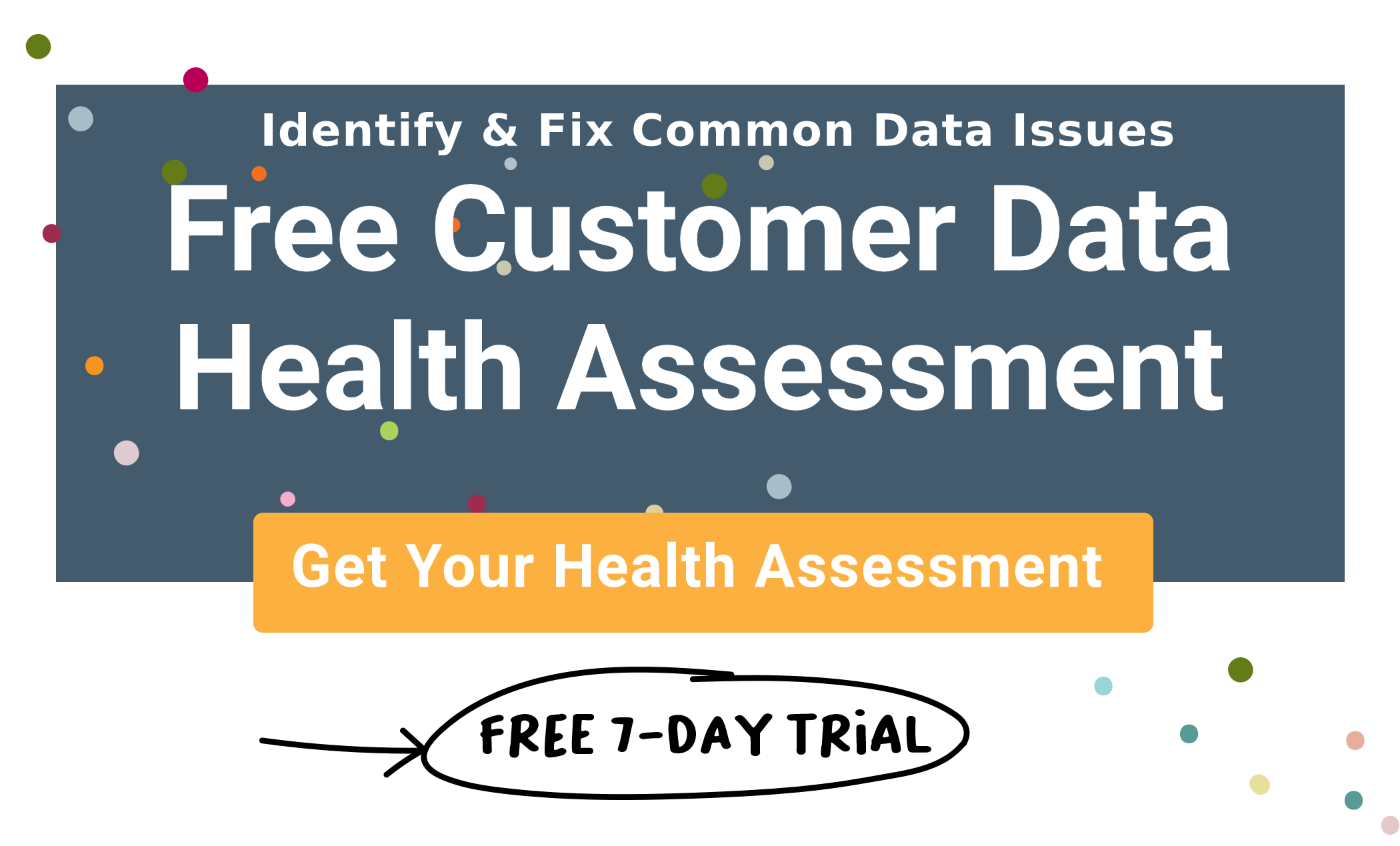HubSpot and Salesforce are two of the most popular marketing and sales platforms in existence today. Naturally, each platform specializes in specific areas and provides unique benefits, leading to many companies integrating both platforms into their daily processes.
Ensuring that HubSpot and Salesforce are connected and synced to share data between them is absolutely critical for maintaining a single customer view, avoiding confusing situations, and improving your marketing campaigns and personalization automation.
Unfortunately, due to differences in the two systems, many companies often find that the integration between them leads to some unintended consequences. They can’t always move, merge, reconcile, or alter data in the way that they would have liked. Certain data issues can also cause the sync between the two platforms to break, causing further data-related issues. Usually, companies don’t realize how cumbersome these issues can be until the integration is already in place. Then they are left scrambling for a solution.
Fortunately, Insycle is designed to solve some of the most common problems that come from HubSpot + Salesforce integration. In this article, we’ll cover some of the most common issues that companies run into with the integration and provide a quick overview of how Insycle can help you to remedy them.
- Stop Bad Data from Breaking the HubSpot/Salesforce Sync
- Avoid Bad Picklist Values When Importing Data in HubSpot
- Merge Duplicate Companies After Connecting HubSpot and Salesforce
- Stop Existing Salesforce Duplicate Leads from Syncing to Hubspot
- Reconcile HubSpot and Salesforce Records to Find When Sync is Broken
- Clean Data in Both Platforms At Once
- Manage Complex Company Parent-Child in HubSpot to match Salesforce Accounts Hierarchies
- A Simple Solution to a Complex Problem
Stop Bad Data from Breaking the HubSpot/Salesforce Sync
One of the biggest issues that companies have when they sync their HubSpot and Salesforce accounts is bad data breaking the sync. A common reason for this comes from the “State/Region” and “Country” properties.
In HubSpot, these properties should be converted from single-line text into dropdown select and contain standard values that will pass validation for Salesforce, in order to keep the sync from breaking. Both the “State/Region” and “Country” properties in HubSpot must be completely standardized, or else the sync will break. A common issue with the type conversion is dealing with historical values. After converting the field type to a dropdown, new values will get mapped properly, but any existing historical values will remain in the contact or company property, and if any of these values is not standard in Salesforce the contact or company records will not sync.
The sync between HubSpot and Salesforce breaking is no small deal, either. All sorts of problems can arise from the sync breaking including workflow rules, validations, assignments, and lead scoring. In short, a broken integration can lead to further data issues that must be resolved before the sync is truly back in place and operational. This leads to a lot of wasted time and resources dealing with these issues.
You can remedy this problem with Insycle, using the “Fields Cleanse” feature. With that, you can explore the existing values in HubSpot and identify inconsistencies. Then, you can migrate legacy values and standardize those inconsistencies with just a few clicks. Insycle can help you to ensure that unplanned sync breaks don’t happen due to bad data and ensure that “State/Region” and “Country” properties remain consistent.
Avoid Bad Picklist Values When Importing Data in HubSpot
Another common issue breaking the HubSpot/Salesforce CRM system sync is bad picklist values that get introduced when you import data in HubSpot.
In an example — if your standard picklist for countries in HubSpot is “United States” but you are importing data that uses “USA,” “US,” or “United States of America” instead, HubSpot will create a new picklist valuefor the new data. Not only will this negatively impact your reporting, estimates, and automation in HubSpot — but it will break the sync between your Hubspot and Salesforce accounts.
Insycle Imports allows you to identify inconsistent picklist values and fix them before data gets loaded into HubSpot, , preventing bad picklist data from entering HubSpot and potentially breaking the sync.
Merge Duplicate Companies After Connecting HubSpot and Salesforce
Yet another common (and aggravating) issue that marketing campaign managers encounter when they sync their HubSpot and Salesforce accounts is the inability to merge duplicate companies through HubSpot once the sync is in place.
In fact, to merge duplicate companies once the integration is in place, users have to completely uninstall the integration, merge duplicate companies, and then re-connect the integration afterward.
This is a huge problem as disconnecting the integration between the the two platforms for even a short amount of time can cause serious problems that may require additional troubleshooting to fix. You’ll also need to re-establish contact, company, and deal field mapping when you reinstall the integration, which can be quite a time consuming effot. However, continuing without the ability to merge duplicate companies will fill your HubSpot account companies database with duplicates, which could cause more serious problems in the long run.
Insycle bridges the gap, allowing you to merge duplicate companies even after the integration is in place. With Insycle, you can identify duplicate companies using exact-match or similar-match, catching duplicates that would normally be missed. You can configure the dedup to ignore common terms like “inc” and “incorporated” in order to surface “Microsoft Inc.” and “Microsoft Incorporated” as duplicates and then merge them.
Stop Existing Salesforce Duplicate Leads from Syncing to Hubspot
When it comes to duplicate Salesforce contacts, HubSpot has limited options for dealing with the issue. HubSpot is capable of deduplicating Salesforce lead and contact records, but only identifies those leads by email address.
If there are duplicate Salesforce lead records and contacts in Salesforce that only share a name or other matching fields, or have a different email convention like jane.doe@acme.com, janed@acme.com, jane.doe@acme.co these will not be identified or considered duplicates by HubSpot — which is concerning, because a large portion of duplicate records in any database are partial duplicates and there is no guarantee that two duplicate records will necessarily share the same email address.
Additionally, your HubSpot account automatically syncs with the first record returned. This can be a problem because the first record returned is not necessarily the most fully-fleshed out or up to date record that contains multiple duplicates. The record that HubSpot syncs with is then the default “master” record and all future changes need to be made to that record to remain synced between the two platforms.
If you choose a master record that isn’t currently synced with HubSpot, you’ll receive an error message in the Salesforce Sync card on the corresponding HubSpot contact record, letting you know that the Hubspot contact is no longer syncing with Salesforce.

To associate the HubSpot contact with a new master record in Salesforce, you’ll have to resync.
Insycle solves this issue by allowing you to deduplicate in both Salesforce and HubSpot. It does not require that you choose the first returned record as the master, and instead gives you complete control over what matching fields constitute a duplicate record and what your chosen master record is.
Reconcile HubSpot and Salesforce Records to Find When Sync is Broken
When your HubSpot and Salesforce integration sync breaks, it can be difficult to figure out when it occurred, what records were affected, and what changes need to be made to ensure consistency between the two platforms again.
Using Insycle’s “Compare” feature, you never have to deal with this problem again. You can export from Salesforce to a .CSV document, then directly compare that document to your HubSpot records to see what the differences are between the two datasets.
For example, “Salesforce Contact ID” is a field that is created in HubSpot and holds the Salesforce Contact ID when new data is imported during the sync. You can use this field to identify which Salesforce contacts exist in HubSpot and which ones do not. You can also compare your data sets the opposite direction — from Salesforce to HubSpot.
Clean Data in Both Platforms At Once
You can use Insycle to clean data in HubSpot and Salesforce at once when the two platforms are connected. You can run all of the standard data cleaning processes in Insycle on your HubSpot data and have the changes reflected in both platforms. These include:
- Format and properly capitalize names
- Format phone numbers
- Format addresses
- Standardize job titles
- Any other standard or custom Single-line text field.
Combing Insycle with Hubspot + Salesforce integration is a powerful tool for ensuring that all of your data is cleaned across the two major platforms.
Manage Complex Company Parent-Child in HubSpot to match Salesforce Accounts Hierarchies
Insycle also makes it easy to establish even the most complex company parent-child associations in HubSpot to match the Salesforce Account hierarchies using “Associations” feature. There, you can set up all necessary associations between records as part of importing the data to ensure that relationships between companies have the correct structure. You can choose to add and even remove associations between parent company and child company, in either direction.
You’ll never have to go back and fix parent-child hierarchies and associations after importing by hand again.
A Simple Solution to a Complex Problem
Insycle is the band aid that makes the HubSpot + Salesforce integration seamless, syncing your HubSpot contact and company records directly to Salesforce. Serving as the connecting tissue between two platforms that play a critical role in your business, Insycle gives you complete control over your data and allows you to truly sync data between the platforms by solving common integration issues.
Want to see just how powerful Insycle can be? Sign up for your free trial below.






